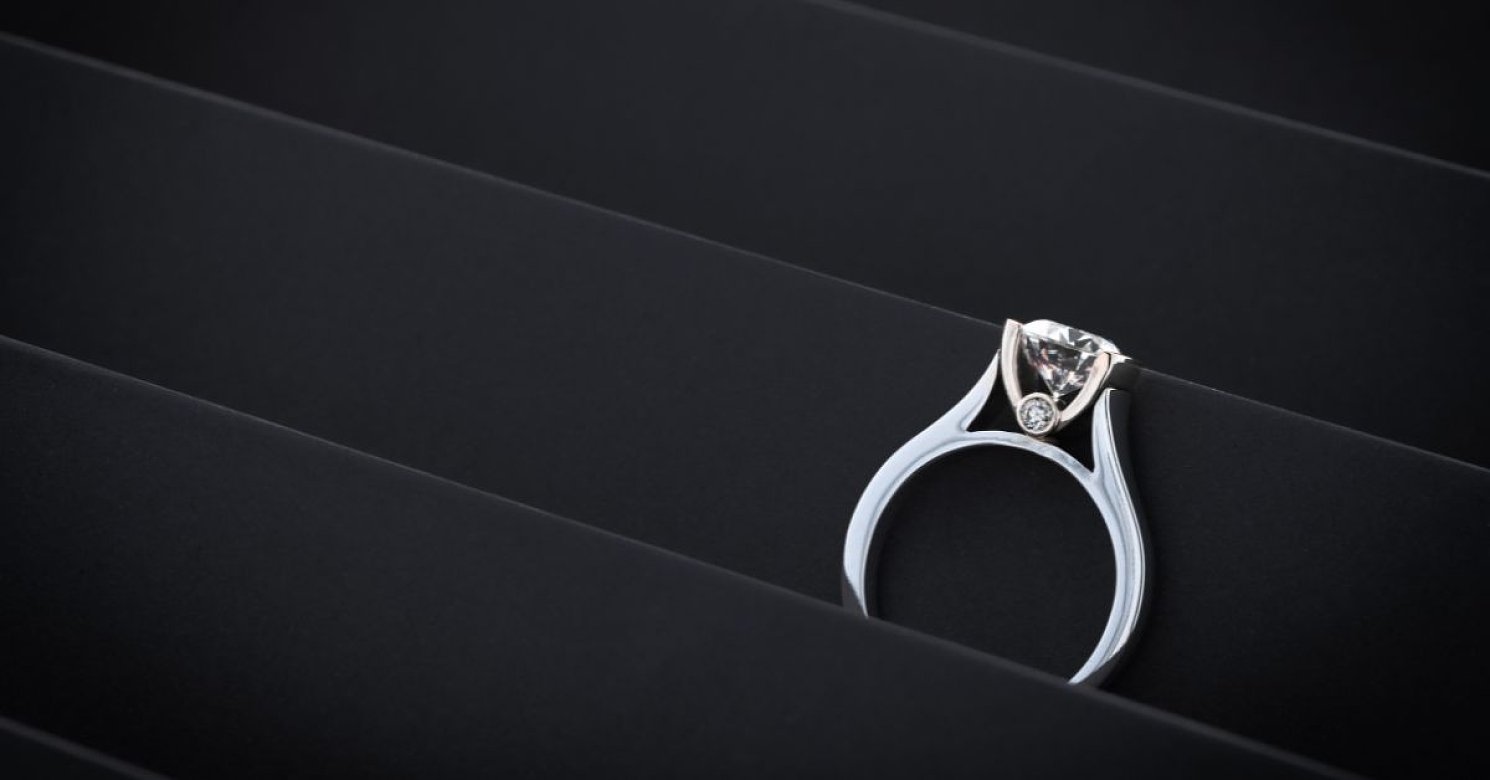
Engagement ring settings are one of the most overlooked features of engagement rings — with the bar setting taking the top spot as one of the most underrated ring settings. While not as conventional as other classic engagement ring settings, the bar setting offers a bunch of benefits that make it a favourite among jewellery crafters.
In your search for a diamond engagement ring, you would have undoubtedly come across the classic types of engagement ring settings such as the prong setting or the basket setting. However, there has been one engagement ring setting that has seen a surge in popularity in recent years — the bar setting.
As opposed to holding the diamond in an elevated position, the bar setting allows diamonds to rest securely in a basket on the base while being enveloped by two vertical bars on both sides. The other parts of the diamond are left exposed, creating a dramatic appearance that is both modern and timeless.

The bar setting is flexible enough to be able to host a variety of diamond shapes, from square cuts to more unconventional shapes like the Asscher cut. However, the best effect achieved with a bar setting is with the most classic of the diamond shapes, the round brilliant diamond.
The reason for this is that organic curves of a round diamond breaks the bold lines of the bar setting for an eye-catching juxtaposition in shape and manages to achieve a visually-striking appearance with a simple setup. To add to this, the bar setting is often wide enough to accommodate smaller pavé diamonds that bring more attention to the central stone, allowing for more opportunities with customisation.
With so many other engagement ring settings to choose from, you’re probably wondering what’s so special about a bar setting for a diamond ring. Aside from more subjective reasons pertaining to style, the biggest reason for choosing a bar setting is for the security that it offers for the diamond stone.
Bar settings offer a lower profile, with the diamond held closer to the finger rather than in an extended position. This significantly reduces the exposure of the gemstone to accidental snags from it getting tangled up in fabric which can place the stone at risk of coming loose.
This makes the bar settings one of the most ideal settings for wearers that move around a lot or have an active lifestyle — the increased security offers peace of mind for the condition of the ring.
Here’s an overview outlining the pros and cons of the bar setting.
Improved sparkle – A bar setting offers greatly increased surface area for the diamond, allowing it to be exposed to more light and therefore have a more impressive sparkle and brilliance.
Compatibility with shapes – Bar settings work with almost any type of diamond shape, removing the limitations in terms of customisation for buyers that are looking for a bespoke option.
Better visibility – Bar settings don’t have any metal prongs obstructing the exposed surface of the diamond, thus giving allowing it to be seen in its full glory.
Increased security – The low profile of bar settings offers increased security for the gemstone against snags on clothing or other fabric which typically cause gemstones in other settings to come loose.

Prone to knocks – With more of the gemstone exposed, a bar setting offers less protection against knocks and bumps that can damage the surface and appearance of the stone. However, this is less of a problem with diamonds as they are incredibly resistant to scratches or chipping.
Difficulty in resizing – If the bar setting completely encircles the ring, it can be difficult to resize later on if necessary due to the placement of the diamonds and structure of the ring.
If you’re not fully convinced of the merits of going with a bar setting for an engagement ring, there are other ring settings that offer a mix of similar yet alternative features:
Channel Setting
A channel setting offers the same mounting approach for gemstones as a bar setting, with the use of metal around the sides of the gemstone to secure it in place. In a channel setting, however, metal covers all sides of the gemstone, enveloping it horizontally while leaving its top exposed. This makes the channel setting slightly more secure than the bar setting.
Pavé Setting
On the other end of the spectrum, a pavé setting offers a similar placement of multiple gemstones alongside each other, but with the use of tiny prongs to hold each of them in place. This setting offers a more traditional appearance with the drawback of being more prone to snags with fabric or hair.

The bar setting is an outstanding option for a bespoke engagement ring — it offers incredible brilliance and shows off the chosen diamond in a modern and contemporary way. As one of our most popular engagement ring setting styles at GS Diamonds, our jewellers highly recommend the bar setting for buyers that want a unique ring that offers both comfort and a stunning appeal.
Create your perfect engagement ring at one of our diamond showrooms in Sydney, Melbourne and Brisbane with GS Diamonds.